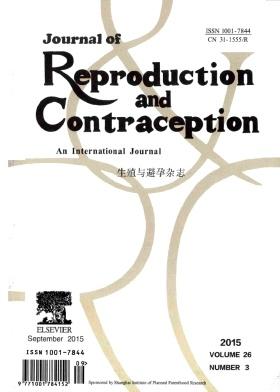Transcription factors dysregulated in three complex birth defects datasets
IF 0.7
4区 医学
Q4 OBSTETRICS & GYNECOLOGY
引用次数: 3
Abstract
Abstract Objective: To investigate the roles of transcription factors (TFs) in the etiology of complex human birth defects, including neural tube defects (NTDs), congenital heart diseases (CHDs), and hypospadias. Methods: We examined the overlap of genetically associated genes among NTDs, CHDs, and hypospadias. We then compared the expression profiles of these diseases based on all the detected genes and disease-associated TFs. The differentially expressed TFs that we obtained were further subjected to functional enrichment analysis to elucidate their role in the development of these birth defects. Results: TF genes were significantly enriched in complex birth defects (P = 5.95 × 10−24). NTDs, CHDs, and hypospadias showed distinct gene expression profiles compared with the controls. Although TFs could not efficiently separate CHDs from normal subjects, distinct gene expression profiles of TFs could distinguish NTDs and hypospadias from controls. Differentially expressed TFs can be used to characterize NTDs, hypospadias, and controls. The enriched TFs in biological processes (BPs) reflected the different morphological processes of NTDs, CHDs, and hypospadias. Conclusions: This study indicates that abnormal expression patterns of specific TFs may disrupt the normal requirements for developmental equilibrium through the related BPs. The investigation of genetically associated genes and gene expression profiles for the three different complex birth defects provides new insights into how the dysregulation of TFs influences their developmental process.三个复杂出生缺陷数据集中转录因子失调
摘要目的:探讨转录因子(TF)在复杂人类出生缺陷(包括神经管缺陷(NTD)、先天性心脏病(CHDs)和尿道下裂)病因中的作用。方法:我们检测了NTD、CHD和尿道下裂之间遗传相关基因的重叠。然后,我们根据所有检测到的基因和疾病相关的转录因子比较了这些疾病的表达谱。我们获得的差异表达的转录因子进一步进行了功能富集分析,以阐明它们在这些出生缺陷发展中的作用。结果:TF基因在复杂出生缺陷中明显富集(P = 5.95 × 10−24)。与对照组相比,NTD、CHD和尿道下裂显示出不同的基因表达谱。尽管TFs不能有效地将CHDs与正常受试者分离,但TFs的不同基因表达谱可以将NTD和尿道下裂与对照组区分开来。差异表达的TF可用于表征NTD、尿道下裂和对照。生物过程中富集的TF反映了NTD、CHD和尿道下裂的不同形态过程。结论:本研究表明,特异性TF的异常表达模式可能通过相关的BP破坏发育平衡的正常要求。对三种不同的复杂出生缺陷的遗传相关基因和基因表达谱的研究为TF的失调如何影响其发育过程提供了新的见解。
本文章由计算机程序翻译,如有差异,请以英文原文为准。
求助全文
约1分钟内获得全文
求助全文
来源期刊

Reproductive and Developmental Medicine
OBSTETRICS & GYNECOLOGY-
CiteScore
1.60
自引率
12.50%
发文量
384
审稿时长
23 weeks
 求助内容:
求助内容: 应助结果提醒方式:
应助结果提醒方式:


